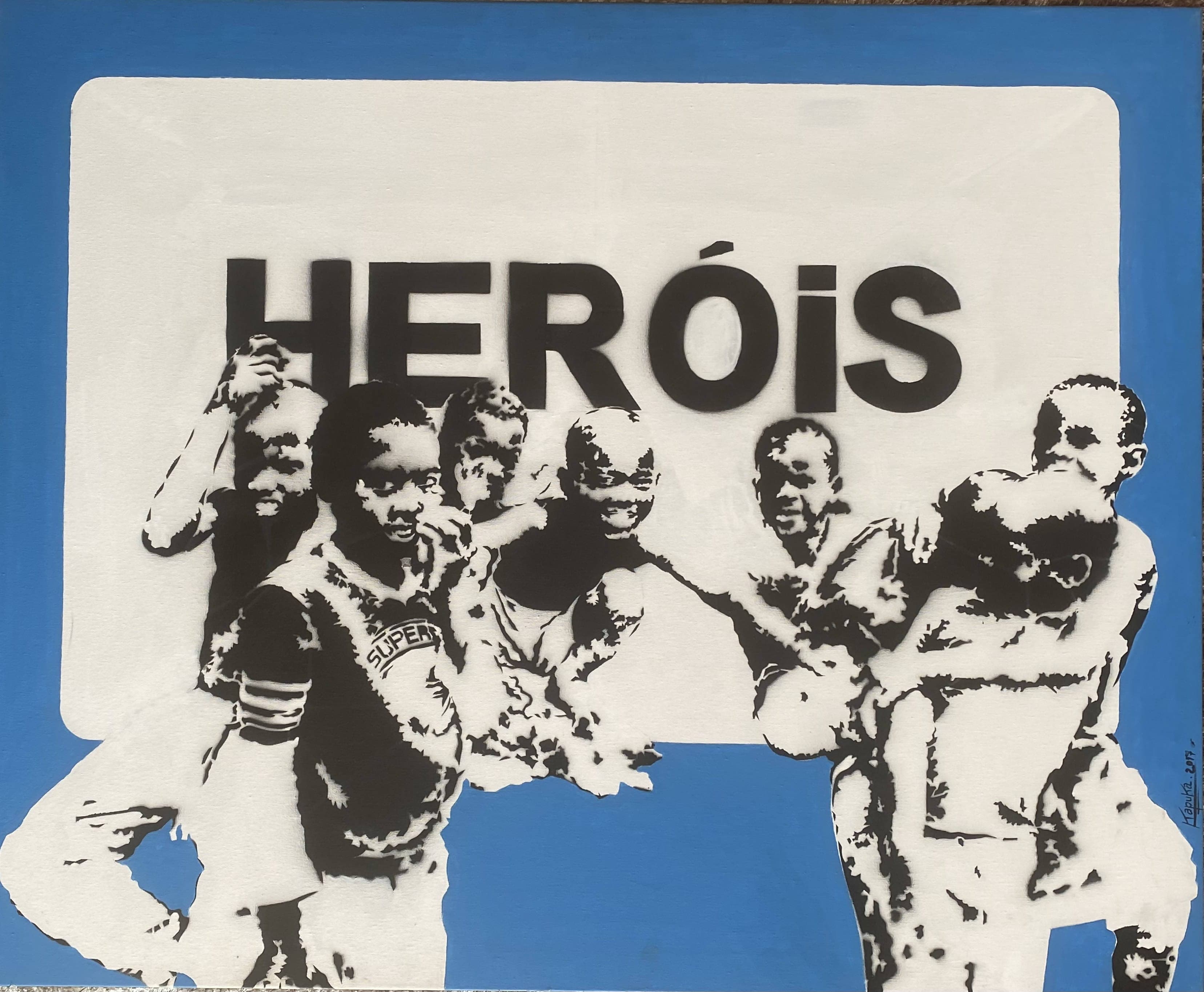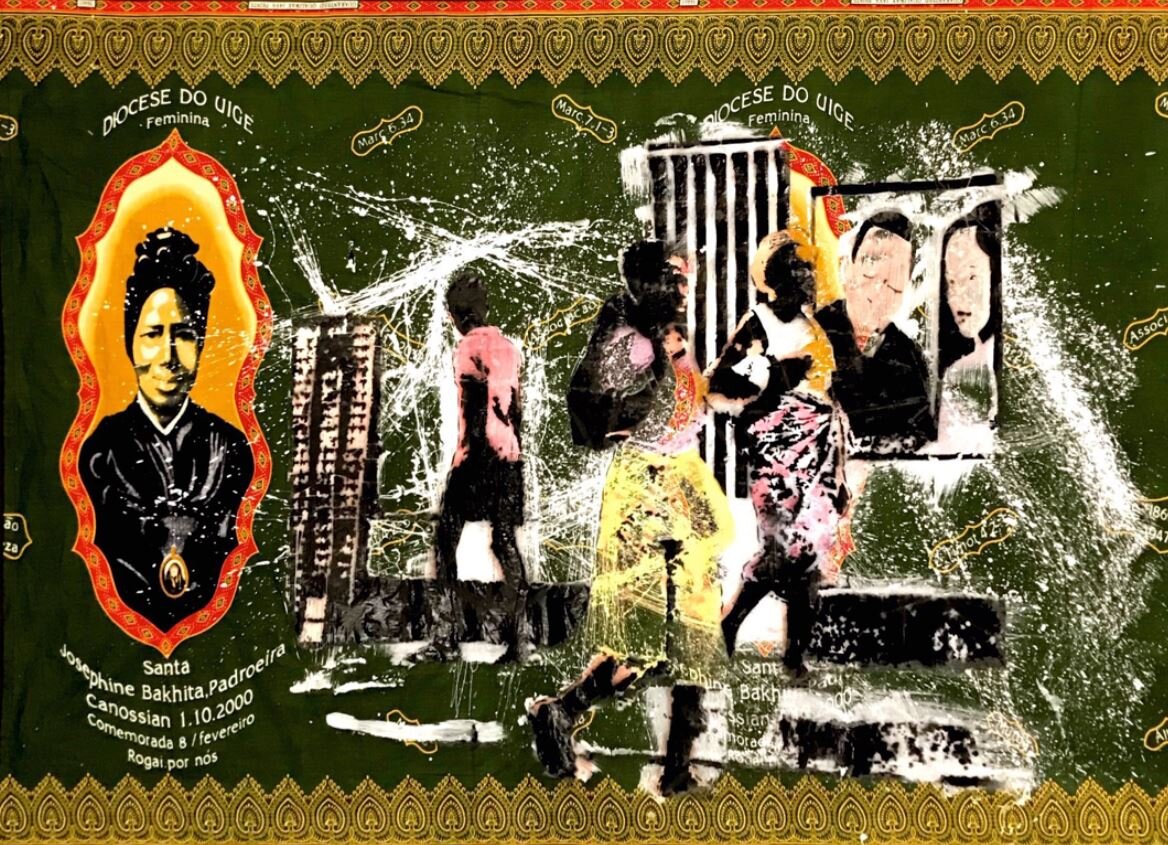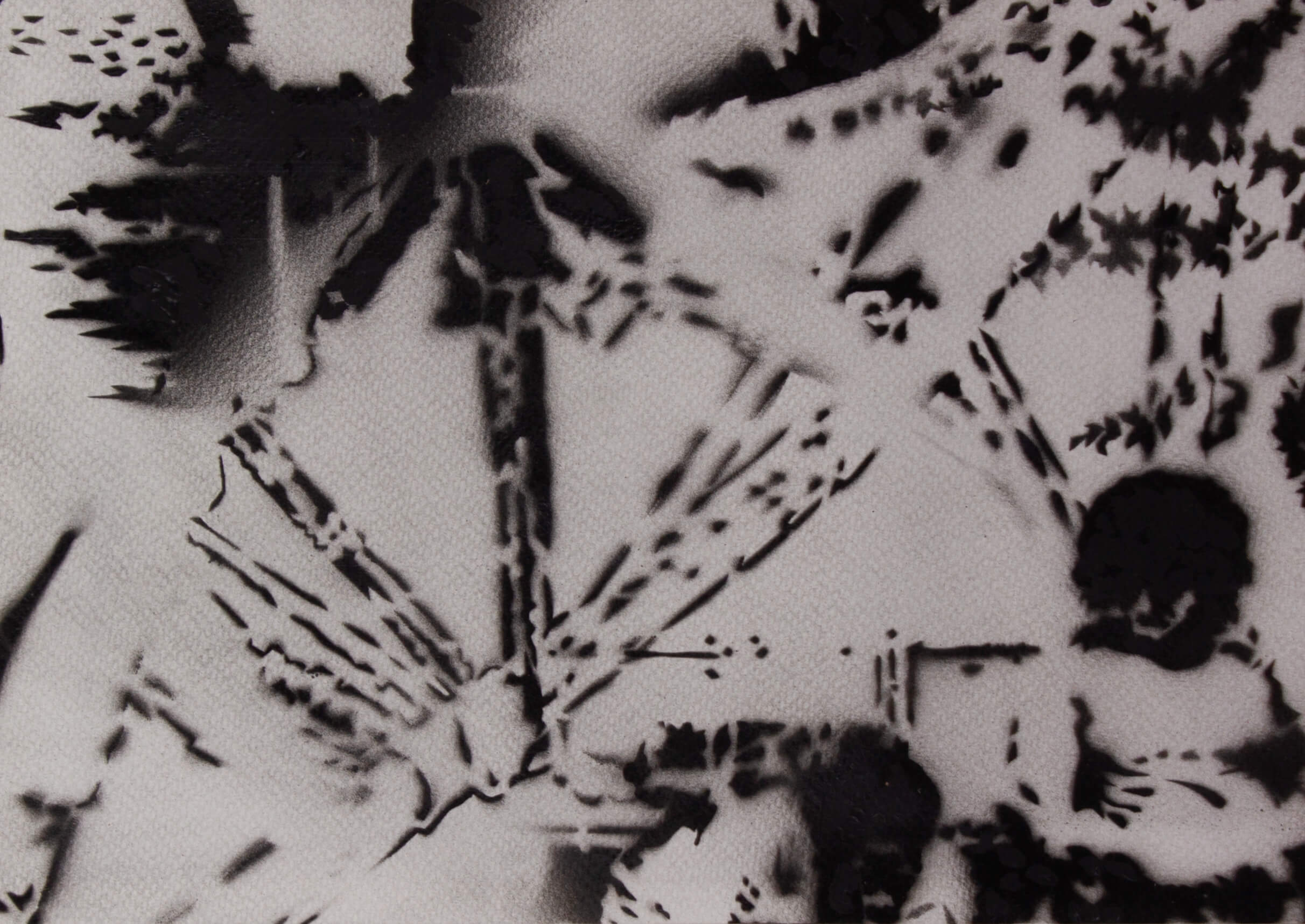
In the vibrant and diverse scene of contemporary African art, few artists have emerged with the same originality and impact as Ricardo Kapuka. With a career marked by self-discovery, cultural exploration and social engagement, Kapuka has established himself as an influential voice both in Angola and beyond its borders. His art transcends geographic and cultural boundaries, addressing profound issues of identity, history and social justice in a unique and provocative way.
In this article, we will explore Ricardo Kapuka's fascinating artistic journey, from his origins in the province of Benguela, Angola, to his rise as one of the most prominent artists on the contemporary scene. We will analyze his influences, distinctive features of his work and the impact his creations have had on the art world and beyond.
What is Ricardo Kapuka's artistic career?
Ricardo Kapuka's artistic journey is marked by a career of self-discovery and search for expression through different forms of art. Born on February 6, 1976, in Catumbela, Benguela province, Angola, Kapuka showed an interest in the visual arts from an early age.
His foray into the world of art began early, at the age of eleven, when he held his first exhibition of work at the headquarters of TPA, Televisão Pública de Angola, in the province of Benguela. This exhibition received positive comments from the late artist Délio Baptista, a member of the National Union of Visual Artists in Benguela, which encouraged Kapuka to continue exploring his talent and passion for art.
Despite being self-taught, Kapuka sought to improve his skills through courses and training. In 1994, he attended a Graphic Arts course at the Amadora Professional Center, in Portugal, seeking to acquire technical knowledge to complement his artistic expression. Later, in 2003, he participated in a 2D Animation Drawing course at Neuroplanet, in Lisbon, Portugal, demonstrating his constant desire to expand his artistic horizons.
During his stay in Portugal, Kapuka was also part of "IMARGEM", the youth of the "Coletivo de Artistas Plásticos de Almada", participating in several collective exhibitions between 1998 and 2002. This experience contributed to his artistic training and the development of his identity as an artist.
Kapuka's work is multifaceted, encompassing different forms of artistic expression. He draws freehand, uses stencil cutting, spray and paint techniques, and also creates video installations with an urban art language. His art is marked by a deep reflection on social and cultural issues, such as the influence of colonization and the search for identity in a post-colonial context.
Throughout his career, Kapuka has received recognition for his work. In 2012, he was awarded the "ENSARTE" Prize in the Painting category, in Benguela, and in 2016, he was awarded prizes from the Alliance Française and the second grand "ENSARTE" Prize in Painting, Angola.
Currently, his works are present in private collections in Portugal, Canada and Angola, including the art collection of Banco Caixa Totta in Angola. With his work, Kapuka seeks to provoke reflections and debates on topics relevant to contemporary society, becoming a significant voice in the Angolan artistic scene and beyond.
What are the characteristics of Ricardo Kapuka's works?
Multidisciplinary: Kapuka is a multidisciplinary artist, which means that his works cover a variety of techniques. It uses freehand drawing, stencil cutting, spray and paint techniques, as well as creating video installations, demonstrating a wide range of artistic skills and expressions.
Reflection on social and cultural issues: Kapuka's works are deeply rooted in his personal experience and the social and cultural realities of Angola and beyond. He addresses topics such as colonization, post-colonial identity, religion, spirituality and moral values, using his art as a tool to provoke reflections and debates on these issues.
Urban and contemporary style: Influenced by the language of urban art, Kapuka incorporates elements of graffiti, street art and pop culture into his works. His style is often vibrant, dynamic and visually striking, capturing the energy and vitality of the streets.
Visual narrative: Many of Kapuka's works tell stories or convey messages through visual narrative. Whether through symbolic images, visual metaphors or sequences of images in his video installations, he creates an immersive experience that invites the viewer to reflect on the meaning behind his works.
Engagement with tradition and contemporary times: Kapuka often incorporates elements of traditional African culture in his works, while at the same time dialoging with contemporary issues. This fusion between traditional and contemporary creates a creative tension that is a trademark of his artistic style.
Questioning and provocation: Through his works, Kapuka challenges established norms and questions structures of power and domination. It encourages the viewer to think critically about the world around them and consider different perspectives and possibilities.
What are Ricardo Kapuka’s influences?
African Culture: As an artist born in Angola, Kapuka is inevitably influenced by the rich and diverse African culture. His works often incorporate elements of traditional African culture, such as symbols, myths, rituals and art styles, demonstrating a deep respect and connection with his cultural roots.
Urban Art and Graffiti: Kapuka demonstrates a strong influence of urban art and graffiti in his work. He uses techniques and styles associated with street art, such as stencils, spray paint and stylized letters, creating vibrant and visually impactful works that reflect the energy of the streets.
Contemporary art: Kapuka's work is also influenced by trends and movements in contemporary art. He incorporates elements of contemporary artistic expression in his works, such as visual narratives, installations and conceptual approaches, remaining relevant in the current artistic scene.
Personal Experience and History: Kapuka's personal life and experiences, including his childhood in Angola and his stay in Portugal, play an important role in his art. His works often reflect his own journeys, cultural identity and the complexities of Angola's colonial and post-colonial history.
Social and Political Debates: Kapuka is influenced by social and political issues in Angola and beyond. His works frequently address themes such as colonialism, decolonization, national identity, religion, spirituality and social justice, reflecting his commitment to giving voice to urgent and relevant issues.
Other Artists and Artistic Movements: Kapuka is also influenced by other artists and art movements, both local and international. You can find inspiration from contemporary African artists as well as global art historical figures, adapting and reinterpreting influences to create a unique and distinctive style.
What is Ricardo Kapuka’s impact on contemporary art?
Exploration of Identity and History: Kapuka addresses issues of identity and history in a deep and insightful way in his works. His reflection on colonization, decolonization, religion and culture contributes to a broader dialogue on the African experience and the complexity of post-colonial identity. This places him as an important voice in the exploration of these themes in contemporary art.
Dialogue between Cultures: Through his work, Kapuka promotes intercultural dialogue, using elements of African and Western culture to create a unique and universally relevant visual language. This helps to increase mutual understanding and appreciation between different cultures and societies, contributing to greater diversity and inclusion on the global arts scene.
Technical and Stylistic Innovation: Kapuka is known for his innovative and experimental approach in technical and stylistic terms. His combination of traditional and contemporary techniques, such as freehand drawing, stencils, spray paint and video installations, challenges established artistic conventions and inspires other artists to explore new creative paths.
Commitment to Social Change: Many of Kapuka's works are driven by a commitment to social change and justice. He uses his art as a form of awareness and engagement, addressing pressing social issues such as inequality, injustice and marginalization. This positions him as an influential advocate of art as a tool for social activism and positive transformation.
International Recognition: Kapuka's international recognition, including awards and exhibitions in different countries, helps to broaden the reach of his art and highlight his importance in the art scene. Its presence in private and institutional collections in several countries also contributes to the dissemination of its message and influence.
Why should I invest in works by Ricardo Kapuka?
Appreciation Potential: As an internationally recognized artist, Kapuka's works have the potential to increase in value over time, especially as his career continues to develop and his work receives more recognition and exposure.
Cultural and Social Relevance: Kapuka's works address important social, cultural and political issues, making them culturally relevant and meaningful. As a result, his pieces may gain even more importance over time, as the issues he addresses continue to be discussed and debated in society.
Innovation and Originality: Kapuka is known for his innovative and original approach to art, utilizing a variety of techniques to create visually stunning and conceptually stimulating works. Investing in your art means acquiring unique and distinct pieces that stand out in the contemporary art scene.
International Recognition: Kapuka's international recognition, including awards and exhibitions in several countries, increases the value of his works on the art market. Investing in your pieces can offer access to a broader and more diverse collector base.
Social Impact Potential: In addition to their artistic and financial value, Kapuka's works have the potential to generate a positive social impact. His works often address pressing social issues such as justice, equality and decolonization, and investing in his art can support his mission to promote social change through art.
Ricardo Kapuka's impact on contemporary art lies not only in his exceptional artistic skill, but also in his ability to provoke reflection, promote dialogue and inspire social change through his art. Kapuka is a central figure in the African art scene and an inspiring example for artists around the world who seek to use their art as a means of expression and transformation.



